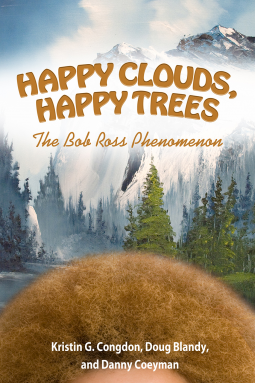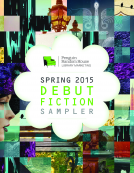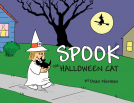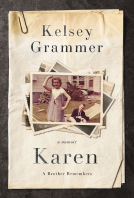
Happy Clouds, Happy Trees
The Bob Ross Phenomenon
by Kristin G. Congdon, Doug Blandy, and Danny Coeyman
This title was previously available on NetGalley and is now archived.
Send NetGalley books directly to your Kindle or Kindle app
1
To read on a Kindle or Kindle app, please add kindle@netgalley.com as an approved email address to receive files in your Amazon account. Click here for step-by-step instructions.
2
Also find your Kindle email address within your Amazon account, and enter it here.
Pub Date Apr 08 2014 | Archive Date Jan 05 2015
Description
An exploration of one of the most beloved and talented artists and painting instructors ever to teach on American television
Readers will know Bob Ross (1942–1995) as the gentle, afro’d painter of happy trees on PBS. And while the Florida-born artist is reviled or ignored by the elite art world and scholarly art educators, he continues to be embraced around the globe as a healer and painter, even decades after his death. In Happy Clouds, Happy Trees, the authors thoughtfully explore how the Bob Ross phenomenon grew into a juggernaut.
Although his sincerity in embracing democracy, gift economies, conservation, and self-help may have left him previously denigrated as a subject of rigorous scholarship, this book uses contemporary art theory to explore the sophistication of Bob Ross’s vision as an artist. It traces the ways in which his many fans have worshiped, emulated, and parodied him and his work. His technique allowed him to paint over 35,000 paintings in his lifetime, mostly of mountains and trees in landscapes heavily influenced by his time in the Air Force and stationed in Alaska.
The authors address issues of amateur art, sentimentality, imitation, boredom, seduction, and democratic practices in the art world. They fully examine Ross as a painter, teacher, healer, media star, performer, magician, and networker. In-depth comparisons are made to Andy Warhol and Thomas Kinkade, and mention is made of his life in relation to Joseph Beuys, Elvis Presley, St. Francis of Assisi, Carl Rogers, and many other creative personalities. In the end, Happy Clouds, Happy Trees presents Ross as a gift giver, someone who freely teaches the act of painting to anyone who believes in Ross’s vision that “this is your world.”
Kristin G. Congdon, Winter Park, Florida, is professor emerita of philosophy and humanities at the University of Central Florida. Her authored or coauthored books include American Folk Art: A Regional Reference (2012) and Just Above the Water: Florida Folk Art (2006). Doug Blandy, Eugene, Oregon, is professor and senior vice provost for academic affairs at the University of Oregon. He has been published in Studies in Art Education and Art Education among other journals and has coedited five anthologies in art education. Painter Danny Coeyman, Brooklyn, New York, earned his MFA from Parsons in 2006 and received a Jack Kent Cooke Fellowship.
Advance Praise
“This book, like Bob Ross himself, is a wonderfully captivating encounter that takes you to unexpected places in both art and life. Happy Clouds, Happy Trees: The Bob Ross Phenomenon reveals information about the internationally famous painter Bob Ross, but goes far beyond being a biographical recounting of this character of contrasts. Bob Ross is often viewed and welcomed as a calming neighborly painting presence and trusted artistic friend; other times he is seen as a joyful yet perplexing enigma. Which was he? A mix of both? Who was Bob Ross, really? In discussion of intriguing topics such as Boredom, Democracy, Sentimentality, Seduction, Imitation, Shamanism, and Joy, along with the inclusion of lively and thoughtful comparisons between Bob Ross, Andy Warhol, Thomas Kinkade, Florida’s Highwaymen, and a host of other artists, this book gives richness to the conversation about Bob Ross and how he is perceived. Happy Clouds, Happy Trees provides a window into the life of Bob Ross while at the same time exploring a multitude of artistic ideas, audiences, artists, and the artworld, casting light on the life and practice of this unique painter, teacher, and friend to millions.”
-Paul E. Bolin, Professor and Assistant Chair of Art Education and Visual Art Studies, The University of Texas at Austin
Marketing Plan
No Marketing Info Available
No Marketing Info Available
Available Editions
| EDITION | Hardcover |
| ISBN | 9781617039959 |
| PRICE | $30.00 (USD) |
Average rating from 16 members
Featured Reviews
Review: Happy Clouds, Happy Trees: The Bob Ross Phenomenon
One of my favorite songs has a line that goes, “Tell the kids to keep on coloring outside the lines/ Until they lose their limitations and their minds are free/… And tell Bob Ross thanks for all the happy little trees.”Happy Cloud, Happy Trees
The song is “To Bob Ross, with Love,” by Gym Class Heroes, and they crush it on more levels than I have blog space to discuss. So I’ll give you the bullet points.
It’s a great song, regardless of the theme It’s a song that encourages creativity, imagination and pursuing your dreams I’m a sucker for songs like that I love Bob Ross and always watched his show growing up (and still do whenever I can)
I hope to one day have a pocket squirrel, like Pea Pod, who helps me paint I totally dig those ASMR channels on YouTube (which I trace back to Bob Ross)
I’m one of those kids who was encouraged to color outside the lines
I didn’t have coloring books growing up. I had blank sketch pads. My parents didn’t want to impose on me the pressure of conformity and a color-by-numbers world. When I wanted to create, I was given a blank sheet. It’s served me well.
To use another quote from “To Bob Ross, with Love”: “My mama made me this way/ I thank her every day.”
Preach it.
So I admit there was trepidation when I started reading Happy Clouds, Happy Trees: The Bob Ross Phenomenon. It’s an academic book, from the University Press of Mississippi, penned by Kristin G. Congdon and Doug Blandy, and illustrated by Danny Coeyman. I feared that an academic treatment would reduce those joyful half-hours of public television bliss to a post-structuralist treatise. Thankfully, that is not the case.
The focus of Happy Clouds, Happy Trees is the phenomenon of the painter and the cult-like nature of his fans, which is incredibly fascinating.
Ross is all the more mysterious for the minimal amount of unauthorized or paratextual materials surrounding him. Mostly, what we know of Bob Ross comes from his program. We don’t have a cache of letters, no scandalous videotapes and, most significantly, no family interests looking to exploit the painter, who died in 1995, for a fast buck.
That’s good and bad. The good is that those of us who grew up watching Ross still know him only by his on-screen persona, not his off-camera flaws. By comparison, the premieres of The Joy of Painting and Michael Jackson’s Thriller came a mere 42 days apart.
It’s still possible to watch The Joy of Painting without feeling dirty.
The mystique of the painter’s life has fueled his cultish (in the best sense of that word) following, and the authors do a wonderful job of exploring the Bob Ross phenomenon and its devotees.
One of the most fascinating narratives in the book is the trinity of Ross, Andy Warhol and Thomas Kinkade. While Ross and Kinkade are sometimes paired in the collective consciousness (due to their being the only two contemporary painters many Americans know by name), they could not be more different. While Ross did his show for free (his income came from art instruction and supplies), Kinkade never met a check he didn’t cash. Ross idealized the wild outdoors, while Kinkade idealized property and domestication. Ross never sold his artwork, while Kinkade established a corporation, chain stores and a subdivision modeled after his paintings.
Perhaps the most significant difference is that Kinkade automated the process, mass producing prints with a few dabs of paint (done by other artists and, occasionally, Kinkade himself). Ross was all about the process. It wasn’t The Profits of Painting, it was The Joy of Painting. We don’t collect Ross, we connect with Ross. The focus is the act of creation, not its end product.
The authors argue, rather convincingly, that we should instead be comparing Ross with Warhol. The two make an odd couple at first, but by book’s end, the connection is apparent. Both defied the norms of fine art and gallery culture (though they were received very differently by that world), and both had a working-class ethic to their craft.
I doubt that MoMA will be racing to organize a Ross retrospective anytime soon, despite the well-composed arguments of Happy Clouds, Happy Trees.
Ultimately, as the authors write, it doesn’t matter. The Bob Ross Phenomenon has nothing to do with fickle gallery predilections or snooty art criticism.
It’s all about the man, our connection to him and that ineffable thrill of creation. Bob had a word for it.
He called it joy.
Readers who liked this book also liked:
John Kotter; Holger Rathgeber
Business, Leadership, Finance, Nonfiction (Adult)











